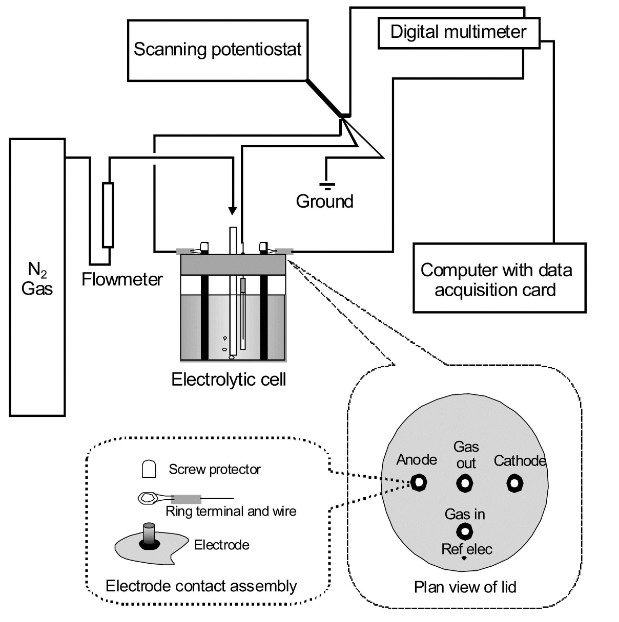Electrochemical Water Treatment Methods and
Environmental Chemistry
graduate students: Mona
Our lab is interested in developing new electrochemical treatment methods for cleaning the environment from potential pollutants. Industrial wastewater can encompass a wide range of potential contaminants and concentrations. Water contamination due to dyes from the textile sources is a major environmental concern. In addition to their unwanted colors, some of these dyes may degrade to produce carcinogens and toxic products. Additionally, heavy metal contamination is a serious problem in several areas of the world. Here, we are currently developing new electrochemical methods for the removal of heavy metals and unwanted dyes from water using conducting polymers. Conducting polymers have excellent electrochemical properties and environmental stability, however, the use of conducting polymers in environmental applications is limited by their poor mechanical properties. To overcome this problem, we deposit conducting polymers on the surface of mechanically robust textiles and fabrics. The deposition process can be performed using chemical or electrochemical methods and the resulting composites show high strength, flexibility and interesting capacity for the removal of dyes and heavy metals.
Another treatment methodology relies on the electrolytic treatment of contaminated water. Some dyes have chemical structures that make them more stable and less amenable to biodegradation. This presents a challenge to publically owned treatment works that typically rely on biological treatment systems. This is motivating research into alternative methods to remove these compounds; one such alternative is electrolytic treatment. In this method, unwanted dyes can be removed by the direct oxidation at the electrodes with the applied current or by the indirect oxidation with electrolytically formed chemical species. Our lab is interested in the electrolytic treatment for the decolorization of dye and textile wastewater [1-2] (Figure 1).

Figure 1: Experimental design used in the electrolytic treatment of industrial effluents containing azo dyes [1].
Selected Publications:
1- Electrolytic Treatment of Azo Dyes Containing O,O’-Dihydroxyazo Complexation Sites, M.J. Kupferle, Ahmed Galal, P.L. Bishop, J. Environ. Eng. Sci., 3, 223-229 (2004). Full Article
2- Electrolytic treatment of azo dyes wastewaters: Impact of matrix chloride content, M.J. Kupferle, Ahmed Galal, P.L. Bishop, J. Environ. Eng., 132, 514-518, (2006). Full Article